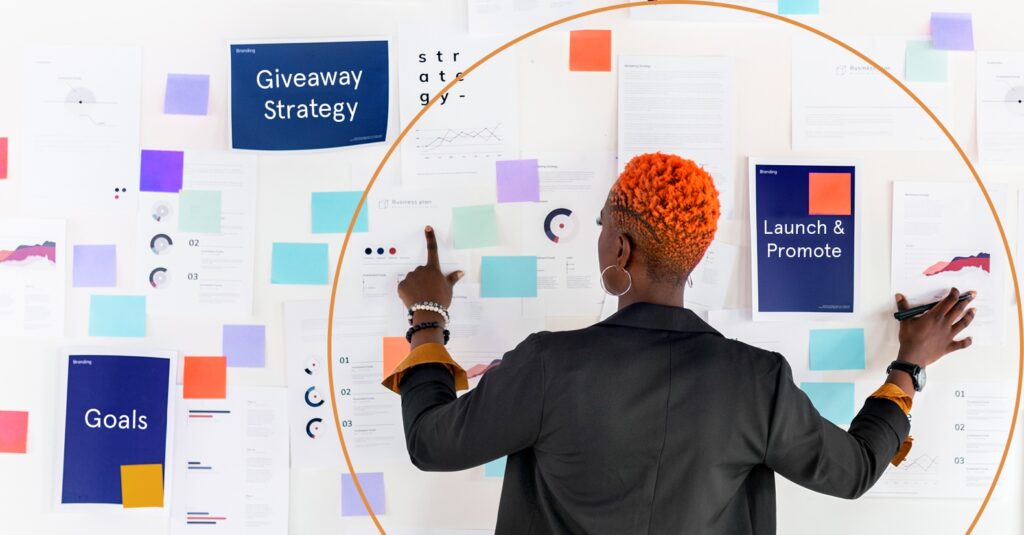The giveaway culture is booming, but do customers really care?

The Issue
In recent times, brands’ marketing strategies have shifted focus from direct sales to relationships and value creation directly linked to brand loyalty. It has, therefore, become natural for marketers and brand managers to treat brands as having both a rational and an emotional component. In turn, this has contributed to creating more complex surroundings, especially for marketers and brand managers confused about the necessary components to encourage customer loyalty.
Last August, two major fast-food chains, Domino’s and Pizza Hut, took their food wars to another level by giving a total of 110,000. Pizza Hut started the craziness after it announced its Golden Giveaway to celebrate 50 years of operating in Australia. “10,000 for each decade!” read the promotional material. But just the next day, Domino’s upstaged its rival with its own “120K giveaway”, starting one day earlier and handing out 10,000 more pizzas. In an act meant to supersede Pizza Hut’s massive anniversary giveaway, Domino’s gave away 60,000 free pizzas and donated $60,000 to charity.
For brand managers, it can be somewhat unclear how brands can easily ‘breakthrough’ to transform brand awareness to customer commitment and loyalty to a specific product. Customers might appreciate specific products for the value or experience, but intense market competition also calls for companies to keep them engaged and interested. Simple strategy companies leverage: giveaways, social media contests, Q & As, which marketers execute daily, weekly, annually, or during special occasions to attract new customers.
The Question
In recent times, brands’ marketing strategies have shifted focus from direct sales to relationships and value creation directly linked to brand loyalty. It has, therefore, become natural for marketers and brand managers to treat brands as having both a rational and an emotional component. In turn, this has contributed to creating more complex surroundings, especially for marketers and brand managers confused about the necessary components to encourage customer loyalty.
Last August, two major fast-food chains, Domino’s and Pizza Hut, took their food wars to another level by giving a total of 110,000. Pizza Hut started the craziness after it announced its Golden Giveaway to celebrate 50 years of operating in Australia. “10,000 for each decade!” read the promotional material. But just the next day, Domino’s upstaged its rival with its own “120K giveaway”, starting one day earlier and handing out 10,000 more pizzas. In an act meant to supersede Pizza Hut’s massive anniversary giveaway, Domino’s gave away 60,000 free pizzas and donated $60,000 to charity.
For brand managers, it can be somewhat unclear how brands can easily ‘breakthrough’ to transform brand awareness to customer commitment and loyalty to a specific product. Customers might appreciate specific products for the value or experience, but intense market competition also calls for companies to keep them engaged and interested. Simple strategy companies leverage: giveaways, social media contests, Q & As, which marketers execute daily, weekly, annually, or during special occasions to attract new customers.
“It’s a low-hanging fruit that, if executed effectively, would look great in a quarterly report. When brand managers are constantly pressured to deliver quick wins, the easiest route becomes very attractive. But a strategy to build or improve brand loyalty is a long-term game that covers factors like values, trust, brand experience and perceived quality”.
What The Streets Are Saying
On the question about whether they had a favourite brand (Nigerian or foreign), 49% confirmed that they did, 38% said no, while the rest of the focus group was uncertain. When we asked if it mattered to them or if they were excited when brands organise social media contests or giveaways, 63.4% said ‘yes’, 29.3% said ‘maybe’. In comparison, just 7.3% said ‘no.
Asked if they would love a brand or an organisation more because of its giveaways to customers on social media, 78% said ‘yes’, 14.6% said ‘maybe’, while 7.3% said ‘no’.
“It is fundamental: When you see Nigerians at parties, you’ll easily understand why brands spend so much on giveaways”, said our brand expert, who also manages a tech business. “We all love free things, but brands have simply forgotten, or never knew, how to execute such campaign strategically. They can turn on the faucet and keep the money flowing. Still, there has to be a clearly-mapped path to ensure that the investment flows to the stated goal – customer growth, retention, brand awareness or whatever the marketing goals are. Nigerians love free things, but they know how to keep it moving if you waste their time”.
“Call it the corporate one-night stand. It’s the campaign that brands can quickly execute to improve consumer interest, boost clicks, social media followership or website visits”, said an expert. “It’s a low-hanging fruit that, if executed effectively, would look great in a quarterly report. When brand managers are constantly pressured to deliver quick wins, the easiest route becomes very attractive. But a strategy to build or improve brand loyalty is a long-term game that covers factors like values, trust, brand experience and perceived quality”.
Social media platforms such as Instagram, Facebook, Twitter, and even Tiktok have become recognised powerhouse resources for brands and businesses. Companies also engage influencers to boost activity on their social media channels or raise awareness around specific services. Over the past decade, these platforms have become measuring tools to determine consumer relationships and attachment to a brand, especially the extent to which the consumer identifies with the brand.
“We are not failing with giveaways – there is nothing wrong with it. But it cannot be a single determining factor to improve brand loyalty”, said an expert and brand influencer. “Essentially, customers who are only motivated by the prizes will leave as soon as the campaign ends. Anyone can easily measure that through sudden sharp growth in subscribers/followers, followed by a smooth outflow. Usually, brands lose about 30-35% of the followers who joined during the social media campaign within a month, and the engagement rate dramatically drops”.
“The giveaways or promotion can induce or attract customers, but building relationships after the campaign should be the priority. Brands can encourage this by, first, personally appreciating those who participate and following up with them. Secondly, brands can also upsell them on other products close to the ones they were trying to win, but selling them at much lower prices,” she explained.
Insights on What The Streets Are Saying are drawn from data collected through in-depth interviews and surveys with our 500-member consumer panel spread across the country, including 100 culture insiders, who are all leading thinkers and doers across media and marketing.
Download This Report

